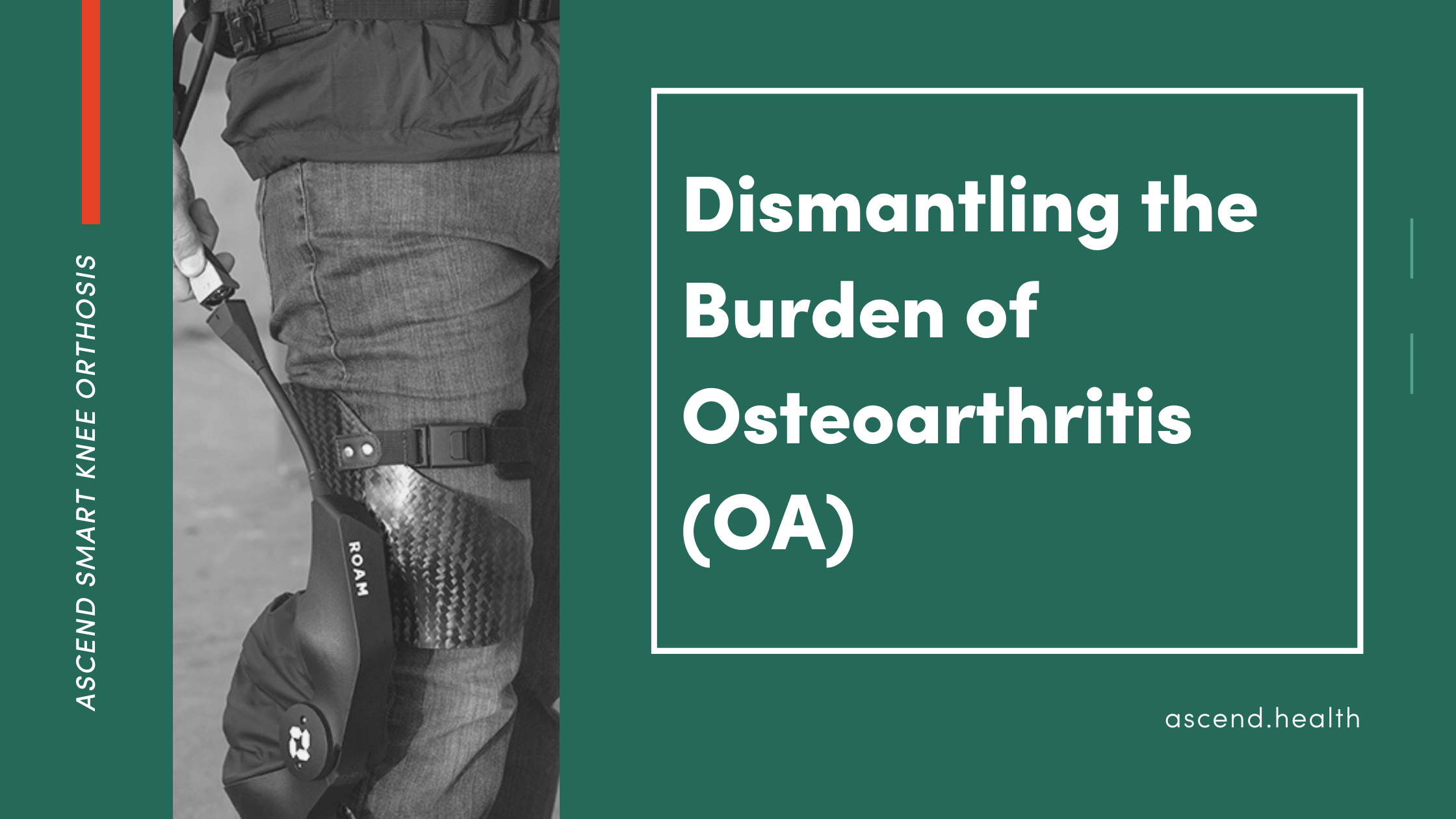Dismantling the Burden of Osteoarthritis (OA)
By Roam Robotics
Over 32.5 million adults are suffering from osteoarthritis (OA) in the US, making it the leading cause of disability in middle-aged to older adults across the country. The relentless and tiresome symptoms of OA, like pain, stiffness, and swelling, often make it nearly impossible to lead a fulfilling and healthy life. The Center for Disease Prevention and Control (CDC) reports 11 million individuals with arthritis find it difficult to walk for extended distances, 8 million struggle climbing stairs, and even 6 million find their social activities are restrained by their disability. There’s currently no cure for OA and medical interventions typically involve pharmaceutical medications that can be potentially addictive or invasive surgeries that are expensive.
The CDC advises that physical activity and fitness are essential for combatting it, but how are those struggling with pain supposed to integrate daily exercise into their lives,when even something as simple as getting out of a chair is a strain?
From the beginning, our mission at Roam Robotics has been to improve lives through a new generation of robotic engineering intended to expand the boundaries of human mobility.
While building Ascend, a wearable robotic orthosis for improved mobility and knee pain relief, there was one major goal in mind: Take the power away from the disability and give it back to the millions of people dealing with OA.
Although Ascend is an advanced robotic wearable, there was never an intention of providing superhuman capabilities that are typically assumed possible with robotics. The focus instead was to help patients regain mobility and build confidence to get back to activities they used to love, whether it's going for a walk with your grandchildren or gardening in the backyard. We determined success by conducting a pilot study with 81 individuals (averaging 57 years old) diagnosed with OA, post-injury OA, or experienced symptoms that present as OA. Participants used Ascend to engage in a series of tests that would determine how the device could potentially improve mobility, change in confidence, and impact pain and stability without additional assistive aids.
Regaining Mobility and Building Confidence
Gaining confidence is essential for health, both physical and mental, which is why we included it as a mandatory component of the study. We were pleased to learn that 67% of participants displayed progress in functional abilities such as no reliance on walking aids, increased confidence, improved gait and equal compensation between legs. For example, when participants were asked to climb a set of uniform steps, 10% of participants who relied on using aid opted out of using those aids while wearing Ascend. These basic improvements are important as they set the framework for helping individuals lead longer and healthier lives. Overall, 35% reported an increase in confidence, which is a critical factor in a patient's ability to take a step forward in a new direction.
Pain and Stability Impact
One of the most critical aspects of the study was to assess whether participants could improve mobility while reducing pain. Across all testing, participants experienced an overall decrease in knee pain while wearing Ascend, with an average reduction of 47% less pain as compared to the baseline without Ascend. When participants were asked to climb a set of steps, typically a strenuous activity for people diagnosed with OA, 69% of participants noticed they were experiencing less pain with an average of 47% reduction. Despite differences in pain baselines, all tests displayed similar pain reduction percentages across participants and 27 percent also experienced improved stability.
Although a first-of-its-kind, Ascend is just the beginning for wearable robotics and how they can expand the boundaries of human mobility. The expansion of Ascend and other similar devices will shape our human relationship with robotics and how we can leverage modern technology to make a positive impact in the lives of millions. We hope that Ascend changes the dialogue surrounding OA, and that this disease might come with challenges, but does not have to be debilitating.
The results of this study proved that Ascend can make the difference OA patients need in their lives and can be an effective alternative to invasive, costly surgery and traditional, passive orthoses. Ascend’s advanced technological capabilities will potentially help individuals get back on their feet without the worry of encountering pain that typically follows them throughout their lives. This summer, our doors have opened in San Francisco for individuals to take Ascend for a Test Drive, and we are thrilled about providing people the ability to become confident in their mobility to get back to an active lifestyle they once knew.
You can read the full Effects of Ascend Smart Knee Orthosis on Pain and Function in a Population Suffering from Knee Osteoarthritis study here.


